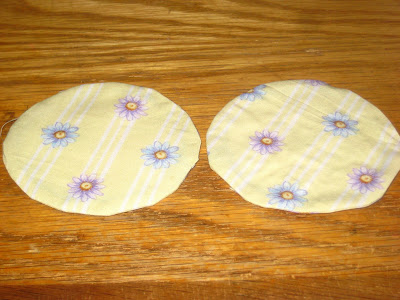This is much simpler than it looks. My niece said it looked
like a sleeping bag for the silverware. So think of it like that, just a
sleeping bag.
Supplies needed:
Thread
Fabric: Cover, inside, and small border (skip the border if
you want.)
Batting
Stiff fusible (skip this is you want a flexible pouch)
You can measure if you want, but I just laid the utensils on
the stiff fusible and made cutting marks.
Trim batting to fit one side of the stiff fusible. If you skipped the stiff fusible, then place your utensils on the batting and mark the cutting lines. This is
the side that your utensils will lay against.
Cut the piece of the fabric that will be on the inside of the
pouch to fit over the fusible and batting. I allowed for about a one inch
border on all sides. Cover the batting and turn so the stiff fusible is facing
up. The inside fabric should now be on the bottom.
Use a hot iron (per fusible directions) to tack the corners
down. Think of how you would wrap a present.
Then tack the ends and sides down. No need to sew just yet.
All pieces are fused in place.
Cut the cover fabric so that it is an inch (1/2 inch seams)
or 2 inches (1 inch seams) wider than the fabric. The length should be
determined by where you want the fabric to stop on the utensils, so add your
utensils onto the fusible section and see where they sit.
Make sure the cover fabric covers the entire back of the
fusible and even folds over the top of the front section.
I added the border on the cover fabric as well. (Note that
the one pictured has two borders. I thought that was too much bulk, so I
changed to one border on the later ones.) You can skip the border fabric all together if you wish.
Turn the cover fabric so that it is right side down facing
away from you. Place the fusible piece, right side down on top of the cover
fabric. Wrap the cover fabric around to the back and tack into place with an iron (if it will reach the fusible) or glue baste.
Make sure the border fabric falls in the spot that you want on the utensils.
Press the sides over so you have one very long piece of
fabric. Fold over the visible fusible (the back) and iron into place. You should have a
inch or two that will wrap around to the front and show on the top of the
pouch.
Turn your pouch over. This photo shows the top unfinished. I
wanted you to see that part of it. I haven’t folded the top over the front just
yet and you can see the raw edges.
I had about an inch on the top available. So I pressed over ½
inch making it flush against the top of the fusible piece, but did not go over. Then I folded
½ inch again which did make it fold over the top of the fusible piece as shown
in the next photo.
Pin or glue baste the top folded section into place. Now
your pouch is ready to be sewn.
Sew around all sides 1/8 to ¼ of an inch.
Now you are
finished and have a utensil pouch.






























































